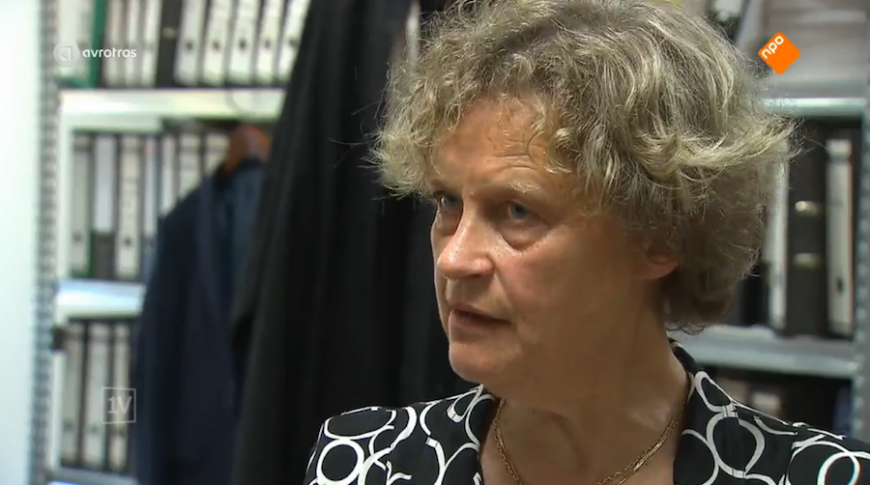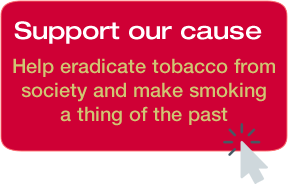Smokers bring case against the tobacco industry
Attempted murder, manslaughter, grievous bodily harm and falsification of documents
29 September 2016

Lawyer Bénédicte Ficq of legal firm Meijering Van Kleef Ficq & Van der Werf today filed charges with the Dutch Public Prosecutor’s Office, on behalf of the Dutch Youth Smoking Prevention Foundation, lung cancer patient Anne Marie van Veen and COPD patient Lia Breed, against four tobacco manufacturers that are active in the Netherlands: Philip Morris International, British American Tobacco, Japan Tobacco International and Imperial Tobacco Benelux.
The tobacco manufacturers are accused of attempted murder and manslaughter and/or premeditated attempts to cause grievous bodily harm and/or premeditated attempts to cause damage to health. Another accusation concerns the falsification of documents. This is the first time that such charges have been brought against the tobacco industry in Europe. It is now up to the Public Prosecutor’s Office to decide whether the case should go to court.
Containing 30 pages as well as annexes, the documentation presented offers detailed evidence of the charges. It is argued that the tobacco industry knowingly and intentionally makes cigarettes more addictive by adding hundreds of substances. They cause new smokers to become addicted quickly, and ensure that existing smokers remain addicted. Moreover, tobacco manufacturers have misled consumers and the government by processing cigarette filters in such a way that they release less tar, nicotine and carbon monoxide in test environments than they do in normal use. The difference can be up to 2.5 times greater.
Sick of Smoking
The case was initiated by Anne Marie van Veen, a 43-year-old mother of three young children. She was diagnosed with lung cancer, after having started smoking at the age of 15. With the support of the Youth Smoking Prevention Foundation, she appealed to people through the website www.sickofsmoking.nl to support her in her effort to bring a case against the tobacco industry because of its criminal activities. Some 16,000 people have already expressed their support. Van Veen has but one important goal: to prevent her and other people’s children falling victim to the deceptive practices of the tobacco industry.
‘It’s not about me,’ Van Veen told Dutch current affairs TV programme EenVandaag. ‘I am convinced that tobacco manufacturers deliberately set out to get children addicted, just as they got me addicted. And I want to protect children from that suffering.’
Van Veen is bringing the case together with Lia Breed, a 66-year-old women suffering from the lung disease COPD who started smoking at the age of 20. It wasn’t until 2006, five years after she was diagnosed with COPD, that she was finally able to quit smoking. Both applicants represent more than one thousand people who have indicated they are also willing to initiate such proceedings.
Six hundred additives
The submission argues that about 30 percent of the weight of a cigarette consists of over 600 added substances, some of which are harmful to health. It has been proven that 70 substances in tobacco smoke have carcinogenic effects.
Not only does sugar make cigarettes more appealing, but the combustion agent acetaldehyde from sugar increases the addictiveness of nicotine. Ammonium compounds increase nicotine absorption in the lungs, while levulinic acid makes the smoke less biting and irritating. Ammonia-based substances boost the release of nicotine, enabling it to reach the brain faster (in 7 seconds). Other substances ensure that the smoke particles (aerosols) are so small that they penetrate the lungs more efficiently and release nicotine more rapidly into the bloodstream.
One goal: to get people addicted
Lawyer Bénédicte Ficq says the following: ‘When I began to study all the additives that cause, enhance and maintain addiction, I nearly fell off my chair in shock at all the manipulated additives in cigarettes. They have just one goal, and that is to get people addicted. People do not realize just how manipulated a cigarette is today. We want to make that clear to the Public Prosecutors Office, and we are convinced that when, like us, it understands what tobacco manufacturers put on the market, it too will conclude that it amounts to “causing grievous bodily harm”.’
Double emission values
An important point in the case put forward is that tobacco manufacturers influence the product tests carried out by controlling bodies such as the National Institute for Public Health and the Environment (RIVM) by making miniscule holes, almost invisible to the naked eye, in cigarette filters. The machines that measure the emissions from cigarettes do not block these holes, and so the emissions from cigarettes are mixed with suctioned air. In normal use, these tiny holes in filters are blocked by fingers or lips. As a result, much more smoke is inhaled than is measured in test situations.
In a report appended to the submission, expert witness Dr. Jeffrey Wigand, a former research director with American cigarette manufacturer Brown & Williamson, speaks of ‘double values’. Smokers inhale up to twice as many harmful substances than are stated on the packaging. So someone who smokes a packet a day actually consumes the emission levels of two packets. With this trick, cigarettes release more harmful substances than are legally permissible. According to the submission made, this amounts to the falsification of documents.
Legal responsibility
The case submitted demonstrates the various ways the tobacco industry can be held legally responsible for the health damage caused to smokers. By knowingly and intentionally getting smokers addicted, the tobacco industry denies them their free will to smoke or not. The fact that cigarettes are a legal product according to the Tobacco Act does not relieve the tobacco industry of its obligation to respect other laws. According to the submission made, the tobacco industry fails to comply with a number of criminal law provisions. It therefore has a case to answer before a criminal court.





 Rookpreventie Jeugd is registered as a Public Benefit Organisation.
Rookpreventie Jeugd is registered as a Public Benefit Organisation.